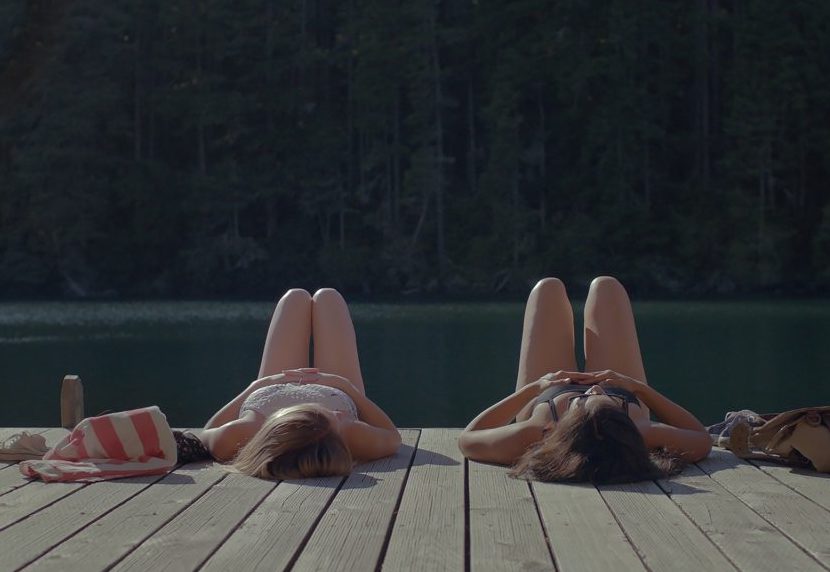Interview by Gabriela Rico
Lara Jean Gallagher is a writer and director. Her shorts and music videos have screened at SXSW, Palm Springs Shortfest, Mill Valley, Portland International, DC Shorts, as well as online via Pitchfork, Spin, Rolling Stone, and NPR, among others. She was named one of IFP’s Emerging Storytellers in 2015.
“Clementine” is Gallagher’s first feature. The film is available to watch in virtual theaters.
A version of this interview was published April 24, 2019.
W&H: Describe the film for us in your own words.
LJG: “Clementine” is a narrative feature film about a heartbroken woman unable to let go of a failed relationship with an older and more successful woman. In a desperate act, she travels to the Pacific Northwest and breaks into the ex’s lake house. Here she gets entangled with a provocative young girl where the roles are reversed and she the older and more successful one.
The film is ultimately about the cyclical nature of relationships—how we can be hurt but then go on to hurt someone else in almost the exact same way.
W&H: What drew you to this story?
LJG: I had a relationship with an older and more successful woman that ended in a breakup that completely floored me. As I got closer to the age that she was when we started dating, I found myself more interested than angry about the experience.
Clementine is definitely working out a lot of tangled feelings about being dumped. She’s dealing with her sense of self-worth — or lack thereof — when dating someone older and more experienced, as well as the haunting and wily subject of age.
W&H: What do you want people to think about when they are leaving the theater?
LJG: I wanted to tell a coming-of-age story, but in a way that’s more mirror than growth. I guess I’m interested in people taking charge of their own coming-of-age stories, deciding how they want to be and how they want to grow.
I hope people are interested. I hope they have questions, want to talk about it, and feel something.
W&H: What was the biggest challenge in making the film?
LJG: In reality, securing the budget, [which majorly impacted] the time we had to shoot—principal photography was 17-and-a-half days with six-day weeks.
I’m definitely someone who likes to be prepared and there literally weren’t enough hours in the day for me to prepare to shoot this film. For some scenes, my preparation was a scribbled shot list and talking out the blocking with my director of photography with these faceless wooden dolls I kept in my pocket.
W&H: How did you get your film funded? Share some insights into how you got the film made.
LJG: It all started with a crowdfunding campaign through Seed&Spark. We also took advantage of generous tax incentive programs through the state of Oregon, where I am based and where the entire film was shot. Otherwise, money was a major struggle throughout.
We began shooting without our full budget and scraped it together every step of the way with loans, investors, grants, and cashing in on years of favors with vendors and talented friends and family.
W&H: What inspired you to become a filmmaker?
LJG: I’ve always loved stories and began writing them. I always saw them in my mind as movies, so I decided to pursue that as the vehicle for the stories I wanted to tell.
I also think something about [how impossible the endeavor seemed] was inspiring to try and figure out. I remember noticing the super-fast credits of my favorite TV shows and being like, well, these people have jobs doing this, why can’t I?
W&H: What’s the best and worst advice you’ve received?
LJG: Best: To treat the work of writing like you would a shop that you owned. Maybe no one will come into the shop that day, but that doesn’t mean you don’t have to get in there and open the shop and see what happens.
Worst: To put in my time. Unfortunately, the film industry isn’t a meritocracy. If you know you want to make your own work but you’re waiting around for someone to give you a chance, give you a promotion, turn an internship into something paid, or tell you your ideas are good enough, you’ll likely be waiting a long time.
W&H: What advice do you have for other female directors?
LJG: Cast your crew with as much attention as your film. Your assistant director, director of photography, and script supervisor need to share your vision and compliment your working style in order for you to feel supported and get what you need from your actors and the rest of your crew.
W&H: Name your favorite woman-directed film and why.
LJG: “Sweetie” by Jane Campion. It’s bold, funny, and weird, but still emotionally resonant. The sister dynamic is the best one I’ve ever seen on screen.







